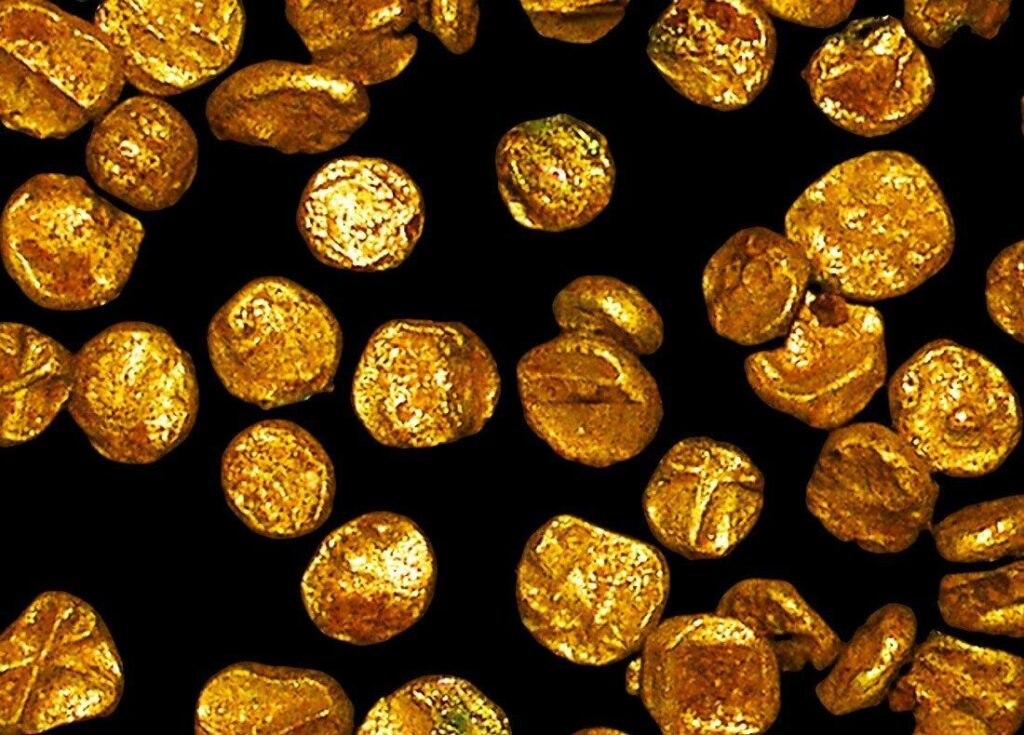world’s smallest gold coin
The Bele, an exquisite gold coin from the Vijayanagara Empire of Medieval India (1336-1646 CE), holds an enchanting place in numismatic history. Spanning over three centuries, the Vijayanagara Empire thrived as a hub of cultural heritage, flourishing trade, and awe-inspiring architectural wonders. The Bele, the world’s smallest gold coin, symbolizes the empire’s economic prosperity and remarkable artistic finesse. This article delves into the captivating world of the Bele, exploring its historical significance, unique characteristics, and enduring legacy.
Historical Context and Significance
During the reign of the Vijayanagara Empire in present-day South India, gold and other precious metals played a pivotal role in the bustling markets. Amidst this flourishing trade, the Bele emerged as a small unit of currency, denoting a gold coin. Minted between the 14th and 17th centuries CE, primarily under the Vijayanagara Empire’s rule, these remarkable coins bear witness to the empire’s cultural and economic achievements.
The Bele coins, weighing approximately 0.1 grams, were skillfully crafted using the ancient technique of die striking. This method involved impressing intricately engraved designs onto a small gold flan using a pair of dies. These coins featured symbolic motifs such as the sun, moon, lotus flower, and the Vijayanagara royal emblem—an artistic portrayal of a boar. These motifs reflected the empire’s cultural, religious, and political identity, offering a glimpse into the vibrant tapestry of the Vijayanagara Empire.
Unique Attributes and Artistic Craftsmanship
The Bele coins stand out not only due to their diminutive size but also because of the remarkable artistic craftsmanship exhibited on such a small canvas. The attention to detail and precision in these coins is awe-inspiring, demonstrating the skill of craftsmen during that era.
An exceptional feature of the Bele is the obverse side, adorned with the Vijayanagara royal emblem—a stylized boar. This emblem served as a symbol of power and authority, representing the Vijayanagara Empire’s rulers. On the reverse side, one can often find symbols associated with prosperity and divinity, including depictions of the sun and the lotus flower. These symbols embody the empire’s flourishing economy and its deep-rooted connection to Hindu religious beliefs.
The Bele coins were minted in various gold alloys, resulting in a spectrum of colors such as yellow, reddish, and pale gold. The vibrant hues and lustrous appearance of these coins make them visually captivating, appealing to both collectors and traders.
Despite their small size, Bele coins were an integral part of everyday transactions during the Vijayanagara Empire. The wide acceptance and circulation of these coins exemplify the empire’s stable economy and the trust placed in gold as a medium of exchange.
Legacy and Preservation Efforts
The Bele coins possess significant historical and numismatic value, providing a unique window into the economic, cultural, and artistic achievements of the Vijayanagara Empire. Today, these coins remain highly sought after by collectors, historians, and enthusiasts alike.
Dedicated efforts have been made to preserve and study the Bele coins, unraveling their historical context and shedding light on the empire’s intriguing past. Archaeologists, historians, and numismatists have meticulously cataloged and examined these coins, deepening our understanding of the Vijayanagara Empire’s economy and culture.
Museums worldwide house collections of Bele coins, allowing visitors to appreciate their exquisite beauty and historical importance. Exhibitions and publications further contribute to disseminating knowledge about the Bele, highlighting its role in shaping Medieval India’s vibrant marketplace.
Conclusion
The Bele, the world’s smallest gold coin from the Vijayanagara Empire, holds a significant place in the annals of numismatic history. These remarkable coins serve as tangible reminders of the Vijayanagara Empire’s economic prosperity, cultural achievements, and exceptional artistic finesse. Crafted with precision and adorned with intricate engravings, the Bele coins showcase the empire’s vibrant marketplace and its commitment to artistic excellence.
Preserved and cherished by museums and collectors worldwide, the Bele coins offer a captivating glimpse into the rich tapestry of Medieval India. Through the study and preservation of these coins, we continue to unravel the secrets of the Vijayanagara Empire’s past, further appreciating the legacy and contributions of this magnificent civilization. The Bele remains an enduring symbol of the empire’s cultural heritage and economic prowess, forever etched in the pages of history.
FAQ
Are the Bele coins made of pure gold?
Yes, the Bele coins were minted in gold alloys, some of which contained high levels of purity.
What is the size of a Bele coin?
The Bele coins were incredibly small, weighing approximately 0.1 grams.
Can I find Bele coins in circulation today?
No, Bele coins are no longer in circulation. They are treasured artifacts sought after by collectors and historians.
What are the symbols depicted on the Bele coins?
The Bele coins feature various symbols, including the sun, moon, lotus flower, and the Vijayanagara royal emblem—a stylized boar.
